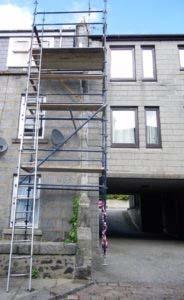Gas safety: What you need to consider.
Natural gas and LPG (liquid petroleum gas) are commonly used as fuels for heating, cooking, cutting, welding and often in the processing of products.
While the majority of us will use gas in some form every day of our personal and professional lives, far too many are unaware of how dangerous it can be if not handled correctly. Last week (16th to 22nd September) was Gas Safety Week.
So, this week I thought that I would also look at this topic covering the serious dangers associated with unsafe gas appliances and how company bosses and managers can minimise those risks in the workplace.
Gas safety: What you need to consider.
Gas safety: what are the potential risks?
Employers are legally required to comply with the relevant Gas Safety regulations to help ensure worker and public safety. If your organisation does not have a secure and safe gas supply with properly functioning appliances, you are putting the safety of your personnel at risk, not to mention the potential reputational and financial damage a gas leak could cause. In addition, a business which fails to carry out important checks on gas appliances could invalidate their property’s insurance arrangements.
Gas leaks
Gas leaks, which may be caused by faulty gas appliances and pipework. Unburnt natural gas and LPG are not poisonous in the same way that carbon monoxide is but both can lead to fires and explosions. To aid detection of a leak an odorant is added to gas which makes it easy to smell.
Fires and explosions
As gas is highly flammable. If gas leaks from a faulty appliance or pipework it can spread quickly. There is then a risk of it accidentally igniting and causing a fire or explosion. Typically, such incidents are very grave in their outcomes and gas safety issues should have a high priority. There is a particular risk from metallic pipework carrying LPG from bulk tanks due to the risk of corrosion and leakage. It is essential that any such pipework which is not readily accessible for inspection is replaced with plastic pipework. Such corroded metal pipework was the cause of an explosion in the ICL Glasgow factory which demolished the factory and killed nine people.
Carbon monoxide poisoning
On average, carbon monoxide poisoning causes 50 deaths each year as well as up to 4,000 medical visits. Carbon monoxide is a colourless and odourless gas which is produced when gas does not burn properly or when there is not adequate ventilation. Improperly maintained or poorly fitted gas appliances may emit carbon monoxide which is why it’s essential to have all gas work carried out and checked regularly by a competent person.
When we inhale carbon monoxide it attaches to the haemoglobin in our bloodstream which reduces how much oxygen the blood can carry. This can have serious consequences within a matter of hours including brain damage or even death.
Because carbon monoxide is colourless and odourless many people are unaware that there is a leak unless they are vigilant and can recognise the early symptoms of carbon monoxide poisoning:
- Tiredness/drowsiness;
- Headaches;
- Nausea;
- Loss of consciousness;
- Chest and stomach pains.
Carbon monoxide leaks can also be detected by a carbon monoxide detector which will sound an alarm when carbon monoxide is in the air.
Did you know?
Approximately 7 people die from CO poisoning caused by gas appliances and flues that have not been properly installed, maintained or that are poorly ventilated, every year.
It is an offence for any person to undertake work on a gas appliance or fitting unless they are trained and competent to do so and it is an offence for their employer to allow such work to take place. Those who undertake work on gas equipment and fittings (other than industrial process plant) also have to be Gas Safe Registered.
Landlords of domestic properties have particular responsibilities for ensuring that annual gas safety inspections are undertaken.
Gas Safe Register works to protect the public from unsafe gas work through:
- a dedicated national investigations team tracking down individuals working illegally
- regular inspections of Gas Safe registered engineers
- educating consumers and raising awareness of gas safety investigating reports of unsafe gas work.
So what must you, the employer, do?
Make sure that every gas appliance and flue is safety checked and serviced annually. If you are starting a lease on new premises, check when gas appliances were installed and when the last safety checks were carried out.
Ensure that all installation, maintenance and safety checks are carried out by a Gas Safe registered engineer and that records of each check are kept for at least two years.
Ensure a carbon monoxide detector is installed on every floor of your workplace and check batteries regularly.
Before an engineer carries out any gas work, check their ID card AND that they are currently on the Gas Safe Register.
Ensure air vents on gas appliances are unblocked and well ventilated.
Educate all employees about the signs, symptoms and risks associated with gas and carbon monoxide leaks and carbon monoxide poisoning.
For example:
- Staining or discolouration around gas appliances;
- Carbon monoxide poisoning symptoms (e.g. headaches, nausea, tiredness) when at work but not when they leave;
- Gas appliances should always burn with a blue flame; an orange, yellow or red flame is a cause for concer.
Carry out a risk assessment for any gas usage and storage appliances to identify potential hazards, controls and policies that are needed.
What to do in an emergency:
The Gas Safe Register recommends that in a gas emergency you act quickly and take the following safety steps:
- get fresh air immediately. Open all doors and windows to ventilate the room
- switch off the appliance and do not use it again until it has been checked by a Gas Safe registered engineer
- turn off the gas supply if it is safe to do so at the meter
- do not operate electrical switches (including turning switches on and off)
- call the National Gas Emergency number 0800 111 999
- if you are feeling ill seek appropriate medical advice immediately and tell the doctor that your symptoms may be related to carbon monoxide poisoning
- contact a Gas Safe registered engineer to check and fix the appliance.
Legislation and guidance
The Gas Safety (Installation and Use) Regulations 1998 as amended
The Regulations deal with the safe installation, maintenance and use of gas systems, including gas fittings, appliances and flues mainly in domestic and commercial premises.
Pipelines Safety Regulations 1996 (PSR)
The Pipelines Safety Regulations 1996, came into force on 11 April 1996. The Pipelines Safety Regulations apply to all pipelines in Great Britain, and to all pipelines in territorial waters and the UK Continental Shelf.
Gas Safety (Management) Regulations 1996
(GSMR) apply to the conveyance of natural gas (methane) through pipes to domestic and other consumers and cover four main areas:
- the safe management of gas flow through a network, particularly those parts supplying domestic consumers, and a duty to minimise the risk of a gas supply emergency
- arrangements for dealing with supply emergencies
- arrangements for dealing with reported gas escapes and gas incidents
- gas composition.
The Product Safety (Revocation) Regulations 2012, which revokes the Gas Appliance (Safety) Regulations 1995
Gas Act 1986 and 1995
Workplace (Health, Safety and Welfare) Regulations 1992
Management of Health and Safety at Work Regulations 1999
Health and Safety at Work Act 1974 (as amended)
Finally, a piece of Case Law re gas:
PJ Livesey Group Ltd was fined £100,000 in November 2012. The property development firm was prosecuted following a blast that destroyed dozens of homes in South Manchester in December 2009, when a worker cut through a six-inch gas pipe in an underground tunnel.
Gas that had leaked from the damaged pipe ignited again causing an explosion. Three schools, a hospital, businesses, two health units and a police station were evacuated and a search and rescue team was brought in to search for people amongst the rubble.
PJ Livesey Group, the principal contractor for the development, had obtained a diagram from National Grid during the planning stages of the project which showed a gas main running into the site. However, the company did not arrange for a detailed survey to be carried out to find out where the pipe ran, and wrongly informed workers on the site that the gas pipes had been decommissioned.
If you would like any further help or support, please please contact us by phone 01458 253682, email or via our Facebook page or by Twitter.
Taunton & Somerset CPD Group at The Exchange House Taunton
Please remember that we now run these CPD events at the Exchange House, 12 – 14 The Crescent, Taunton TA1 4EB on a fortnightly basis
The next of the CPD events is listed below.
As previously requested, if you could let us know whether or not you can attend it would be greatly appreciated. Also, if you would like to give a talk, or know of somebody who would, please contact Jon at [email protected]
Our next Seminar will be on Wednesday 25th September 2019 Could you please arrive by 12:30pm prompt.
Our speaker for this one is Alistair Moore of Giacomini will talk about Underfloor Heating.
If you haven’t already booked your place, or if you are not on the CPD Seminar mailing list but would like to be please drop Jon an email and he will deal with your request.
As per our last one if you could let Jon know whether or not you can attend within 7 days of receipt of his email, it would be greatly appreciated.
Contact Details [email protected] 07831 714199 or 01458 253682
For more details about these and the other forthcoming CPD talks please see: cpds for Sept/ Oct/ Nov & Dec 2019
Save Money on Your Online Training
If you are a company that will need quite a few of your staff trained using these courses, you may want to take advantage of the fact that you can pre-buy the training credits at a bulk rate.
This will allow you to buy the credits at a discounted rate to be used at your convenience. There is no limit on the time it takes to use the credits and 1 credit = 1 training course.
For companies that know they will need over 5 in a year but not all at the same time this automatically starts reducing your costs.
To buy in bulk simply click on the bulk credits button and purchase the number you will require. Once you have paid for your courses you can utilise them at your leisure and fit them into your staff training requirements.
If you have any questions, please contact us and we will be happy to advise.
Roofer fell from ladder
£53k fine after roofer fell from ladder
A roofing contractor has been fined after an employee roofer fell to his death from a ladder while exiting a scaffold.
Aberdeen Sheriff Court was told that on 21 September 2016, Joseph Kane, an employee of Henderson and Aitken Limited, fell from the top rung of a ladder when it slipped sideways on the scaffold. Mr Kane died of multiple injuries.
The scaffolding had been erected by Henderson and Aitken Limited employees and the ladder was tied, using a blue nylon cord, to the scaffold ledger at only the left stile.
An HSE specialist inspector that carried out the investigation into the incident estimated the lateral movement of the ladder due to the lack of fixity was approximately 20cm.
HSE also found a Henderson and Aitken Limited employee had erected the scaffold even though he was not a qualified or competent scaffolder. He had been asked to do this by the company director who was aware he was unqualified. The director then allowed three people to access the scaffold. The scaffold was not erected to the correct standard.
Henderson and Aitken Limited of 6 Balmoral Terrace, Aberdeen, pleaded guilty to breaching Regulation 4 of Work at Height Regulations 2005 and Section 33(1)(c) of HSWA and was fined £53,000.
Speaking after the hearing HSE Principal Inspector Niall Miller said:
“Falls from height remain one of the most common causes of work-related fatalities in this country and the risks associated with working at height are well known. This tragic and preventable death highlights the need for those undertaking work at height to ensure that it is carried out safely, that industry guidance is followed and that the relevant regulations are complied with. It is vitally important that those planning and arranging for such work give sufficient regard to the risks posed to workers and members of the public through their actions.”
Waterloo station worker death
Engineer killed at Waterloo station
Transport for London (TfL) has confirmed that an engineer has been killed whilst working on travellator at Waterloo Station. 
A contractor has been killed whilst working on a moving walkway between platforms at Waterloo Station in the early hours of Wednesday morning. The man, who has not yet been named, was treated by paramedics at the scene, before being pronounced dead at 02:20 BST.
His death is being treated as unexplained and is currently being investigated by British Transport Police. It said in a statement: “Officers were called just after 2.20am last Wednesday (Wednesday 18 September 2019) to London Waterloo Underground Station following reports that a contract worker had received an injury.
“London Ambulance Service and London Fire Brigade were already on scene and it became apparent the incident was more serious.
“Lifesaving attempts were very sadly unsuccessful, and a man was pronounced dead at the scene.”
Vernon Everitt, Interim Managing Director of London Underground, has said:
“We are also very conscious of the impact this sort of incident has on first responders and station staff, and a full support network has been stood up.
“This is at the very early stages of understanding what has gone wrong here. I would like to reiterate our deepest condolences to the family of the individual concerned.”
Remember
Unlike other organisations who send out newsletters giving you a little titbit of information, then stating that if you want to follow the full link or read the full story or get more information you must pay to subscribe to their service.
- Our newsletter service is FREE,
- The links we supply are FREE,
- The helpline advice is FREE.

If you find this newsletter service of use and you think others might also find it useful, then kindly pass it on and ask them to subscribe for free, so they can continue to receive it in their own right.
Also contact us if you have a particular health and safety subject or question you would like covered
If you have any queries on any health and safety matter, please contact Jon Wilkins on 01458 253682 or by email on [email protected]


